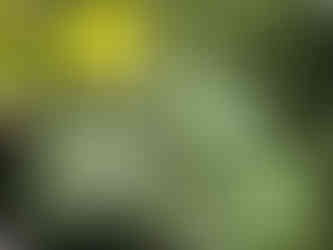Euryops pectinatus
- Admin

- Aug 14, 2021
- 2 min read

Euryops pectinatus is another favorite among homeowners, landscapers, and by extension, every local big box hardware store looking for a quick springtime sale. Fresh from the growers, this evergreen shrub is mostly sold when it is in full bloom with showy, cheerful daisy-like flowers. Hardy, too, tolerant of low water availability, ta boot. For all these reasons, designers might specify them in parks, quasi-public parks, or commercial spaces for a splash of color that could last over lengthy warm seasons. The prolific bloom season, however, means maintenance workers will be spending time deadheading on a regular basis.
The need for deadheading is a good reason to make sure the maintenance program is quantified for the necessary time and resources. For maintenance people and gardeners, deadheading a hedge of this plant could mean manually trimming every spent bloom, clipping off a little foliage to encourage density, while others may save time by wheeling hedge trimmers with mixed success. Know that well cared for specimens will last longer than those that suffer from neglect or abuse.
If there is really any drawback its the overuse in the landscape, right up there with Agapanthus and Lagerstroemia, but not quite as popular as its cousin, E. pectinatus 'Viridis.' The straight species, our subject here, has the popular yellow flowers, but the foliage is gray, two colors that have trended together in the last couple years. By contrast, E. pectinatus 'Viridis' has deep green foliage, which people often prefer.
facts
Botanical Name: Euryops pectinatus
Euryops: Greek, eurys, to hide; opsis, eye. Together somehow describes the flowers.
Pectinatus: Appearing similar to a comb, which refers to the pinnately compound leaves.
Common Name: No common name (sold as Euryops); wooly resin bush, golden euryops, golden daisy bush, wolharpuisbos
Family Name: Asteraceae
Origin: South Africa
design considerations
Positioning: Middle ground
Garden Themes: Sub-tropical, Mediterranean, coastal, cottage
Uses: Border, mass, low screen, informal hedge
identifying characteristics
Type: Evergreen shrub
Form: Round
Texture: Fine
Size: 3' high, 4' wide (may reach 6' high and wide)
Outstanding Feature(s): Flower, foliage
Stems: Light gray
Leaf:
Type: Pinnately compound
Arrangement: Alternate
Shape: Oblong
Margin: Lobed
Color: Gray-green, silver
Surface: Tomentose
Flower: Spring to Autumn. Showy, bright yellow composites, or daisy/radial
Fruit: N/A
cultural requirements, tolerances & problems
Sunset Zones: 8,9, 12-24; H1, H2
USDA Zones: 8-11
Light: Sun
WUCOLS SF Bay Area Hydro Zone: Low
Soil:
Texture: Clay, loam, sand
Moisture Retention: Well-drained
pH: Acidic to slightly alkaline
Tolerances: Drought
Problems:
Branch Strength: N/A
Insects: Nematodes
Disease:
citations & attributions
Bayton, R. (2019). The Royal Horticultural Society's the Gardener's Botanical: An Encyclopedia of Latin Plant Names. London: Mitchell Beazley.
Extension Gardener Plant Toolbox. "Euryops pectinatus." North Carolina State University, Raleigh. Accessed on August 14, 2021, from https://plants.ces.ncsu.edu/plants/euryops-pectinatus/.
Norris Brenzel, K. (Ed.). (2012). The New Sunset Western Garden Book. New York: Time Home Entertainment, Inc.
PlantZAfrica. "Euryops pectinatus." South African National Biodiversity Institute, Brummeria. Accessed on August 14, 2021, from http://pza.sanbi.org/euryops-pectinatus.
Water Use Classification of Landscape Species. "WUCOLS IV Plant List." University of California, Division of Agriculture and Natural Resources, Davis. Accessed on July 27, 2021.
Photos:
Leaves: "Euryops pectinatus" by Bri Weldon is licensed under flickr.
Shrub: "Euryops pectinatus" by Stickpen is licensed under Wikimedia Commons.
Feature photos purchased from Shutterstock.








Comments